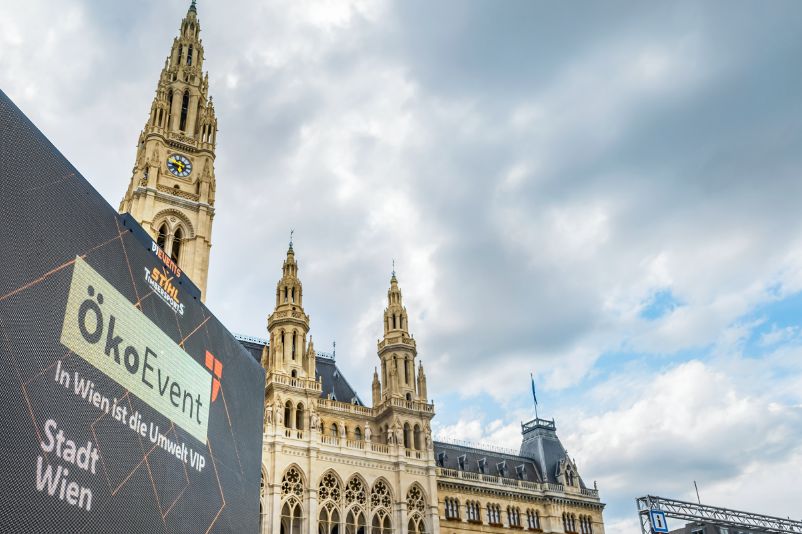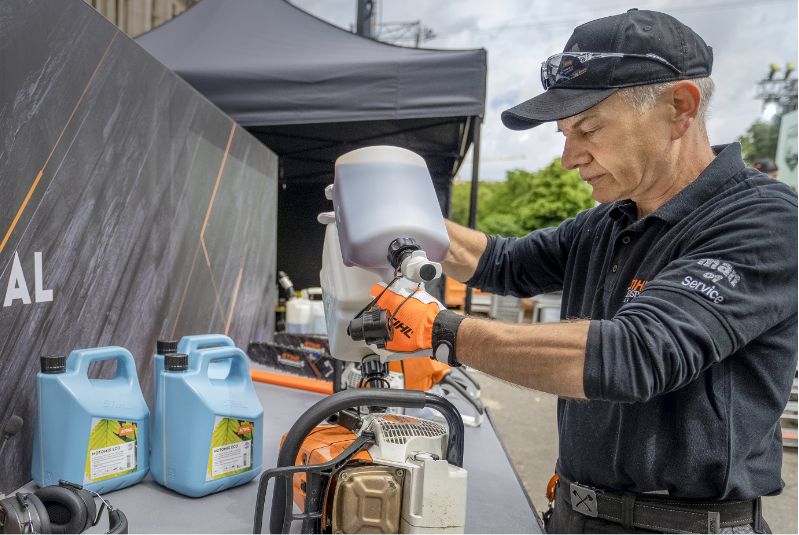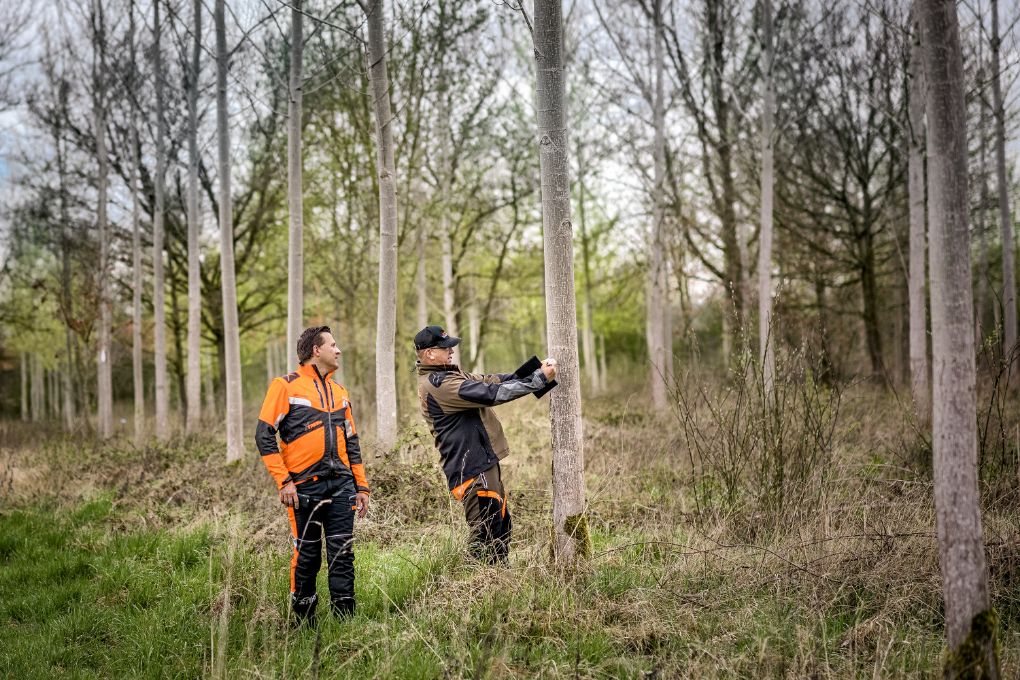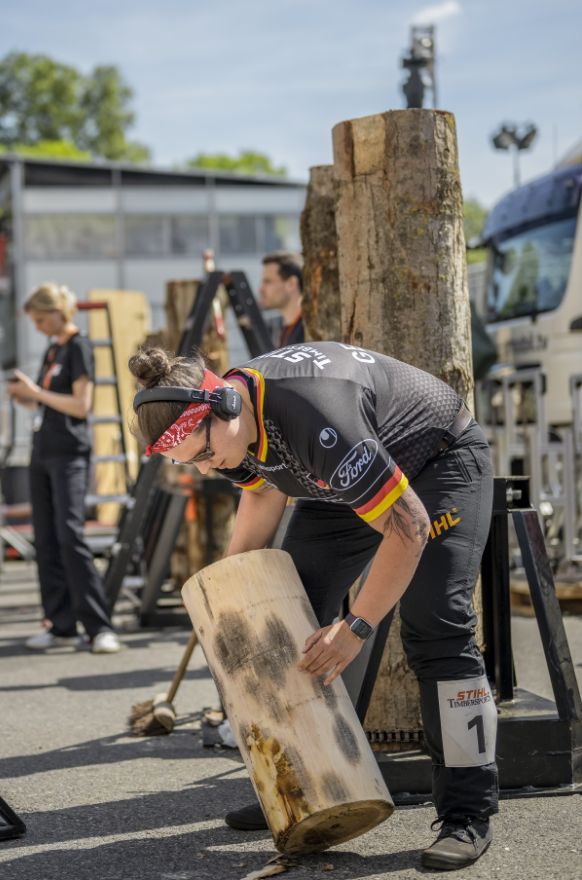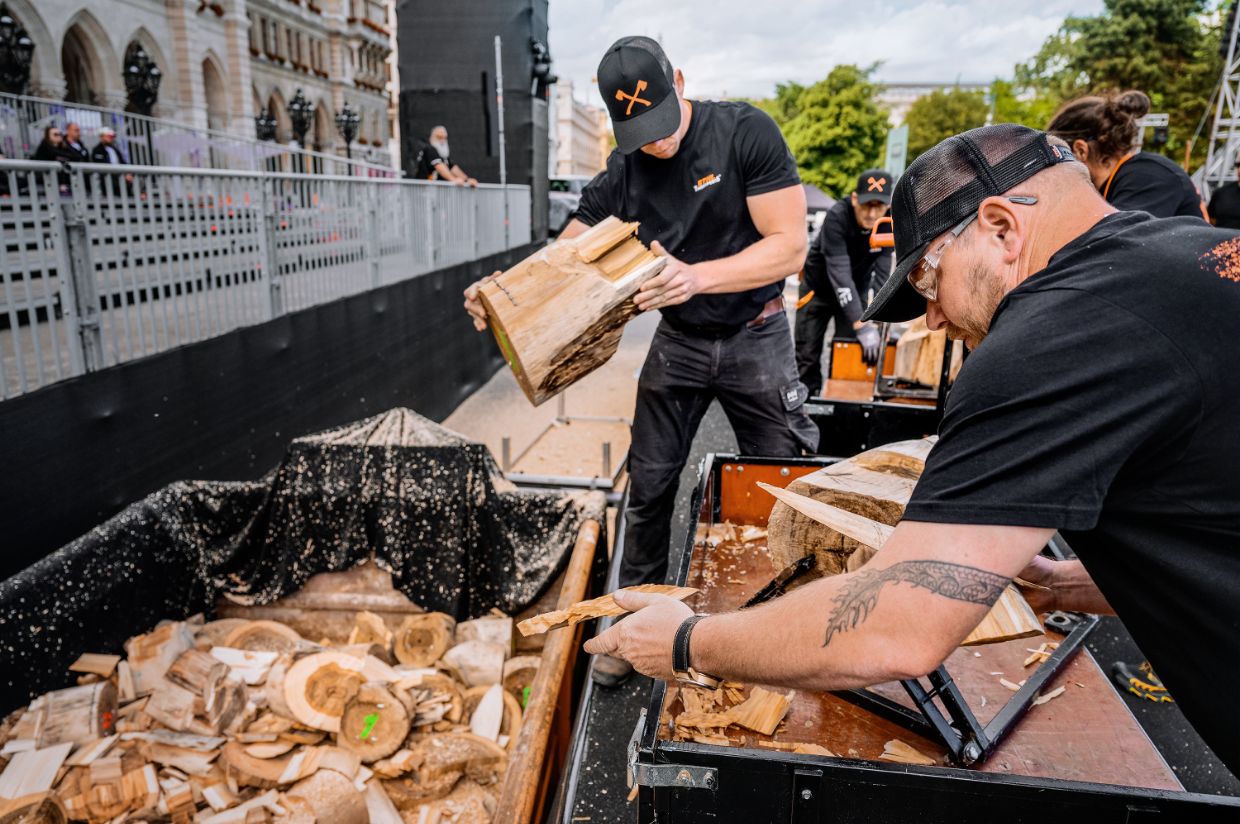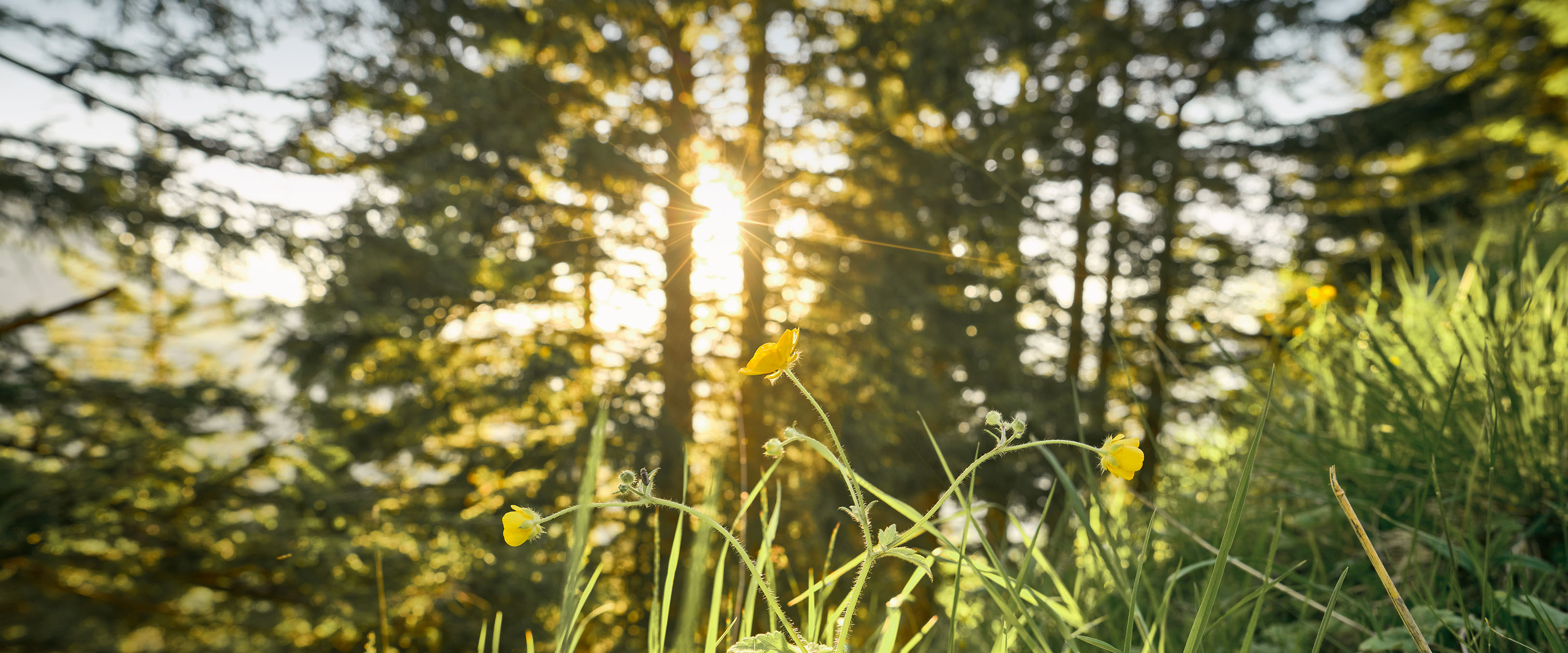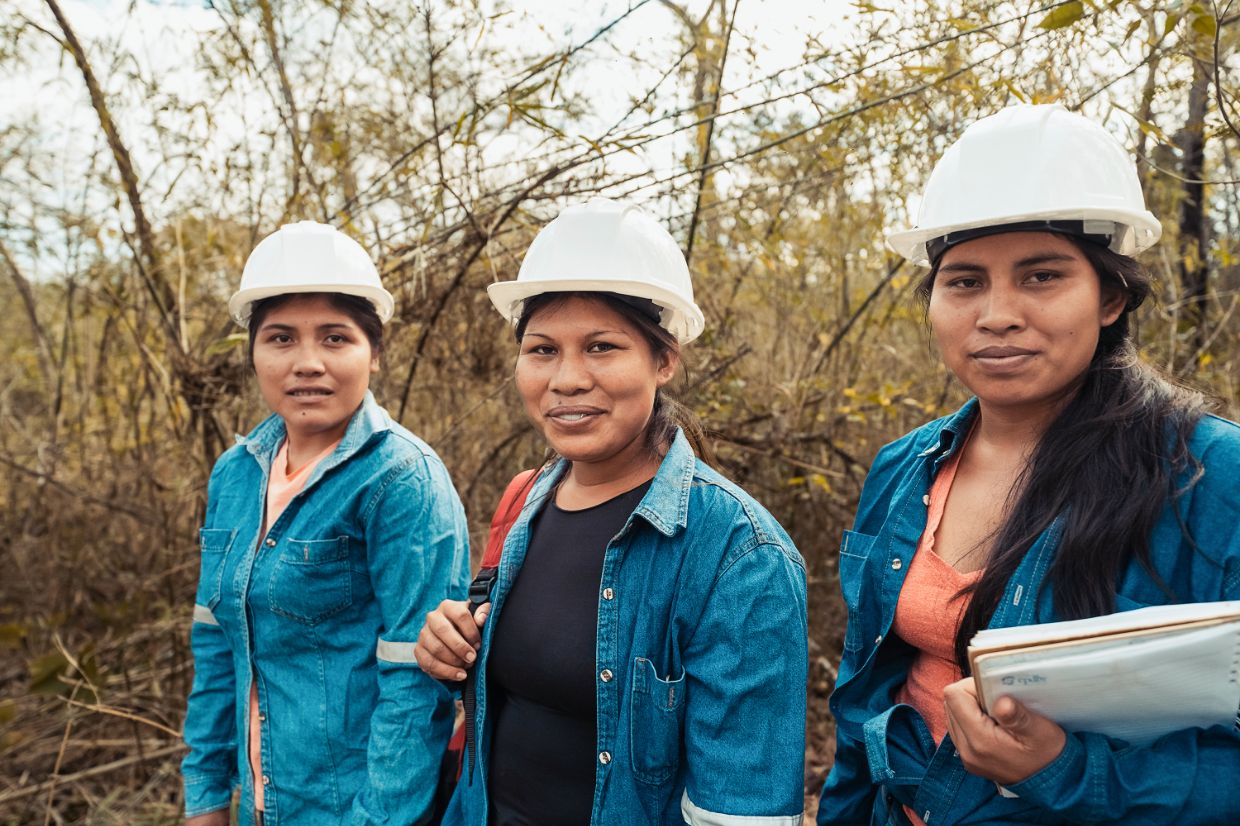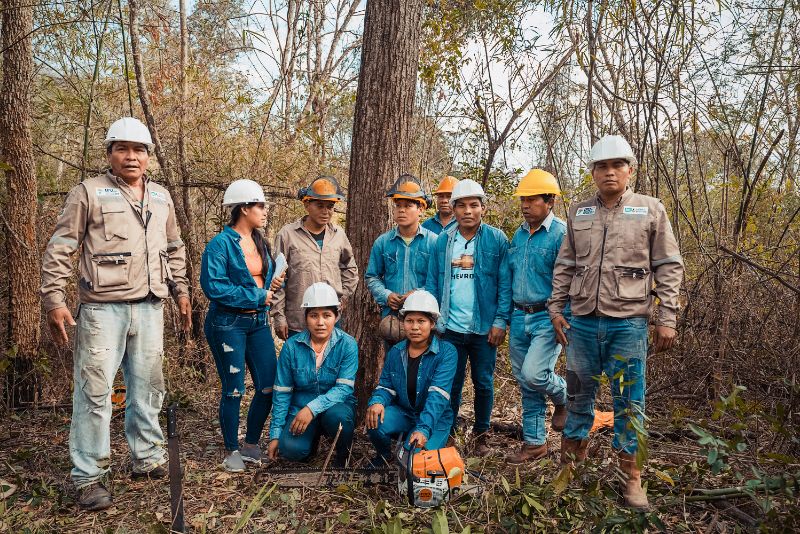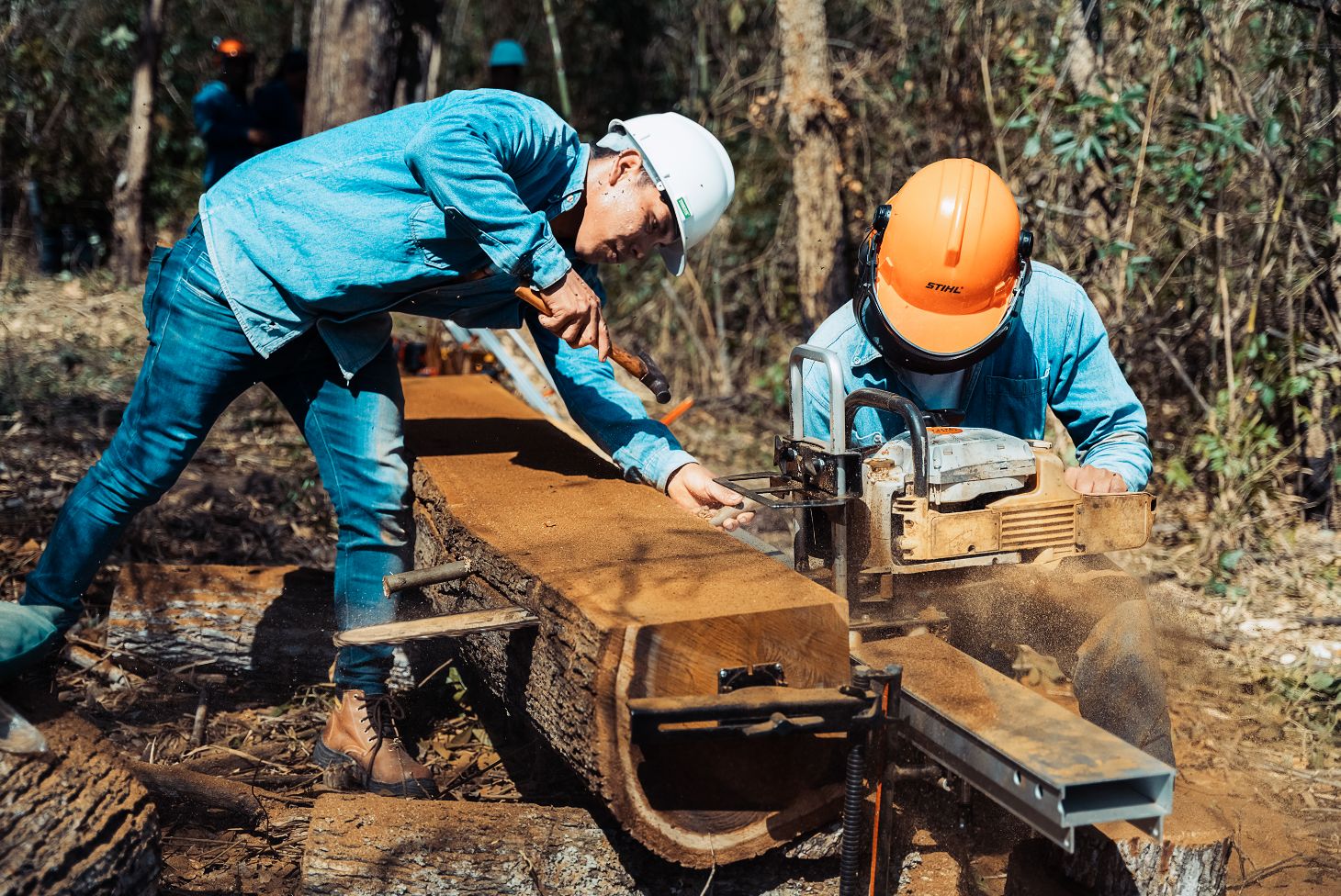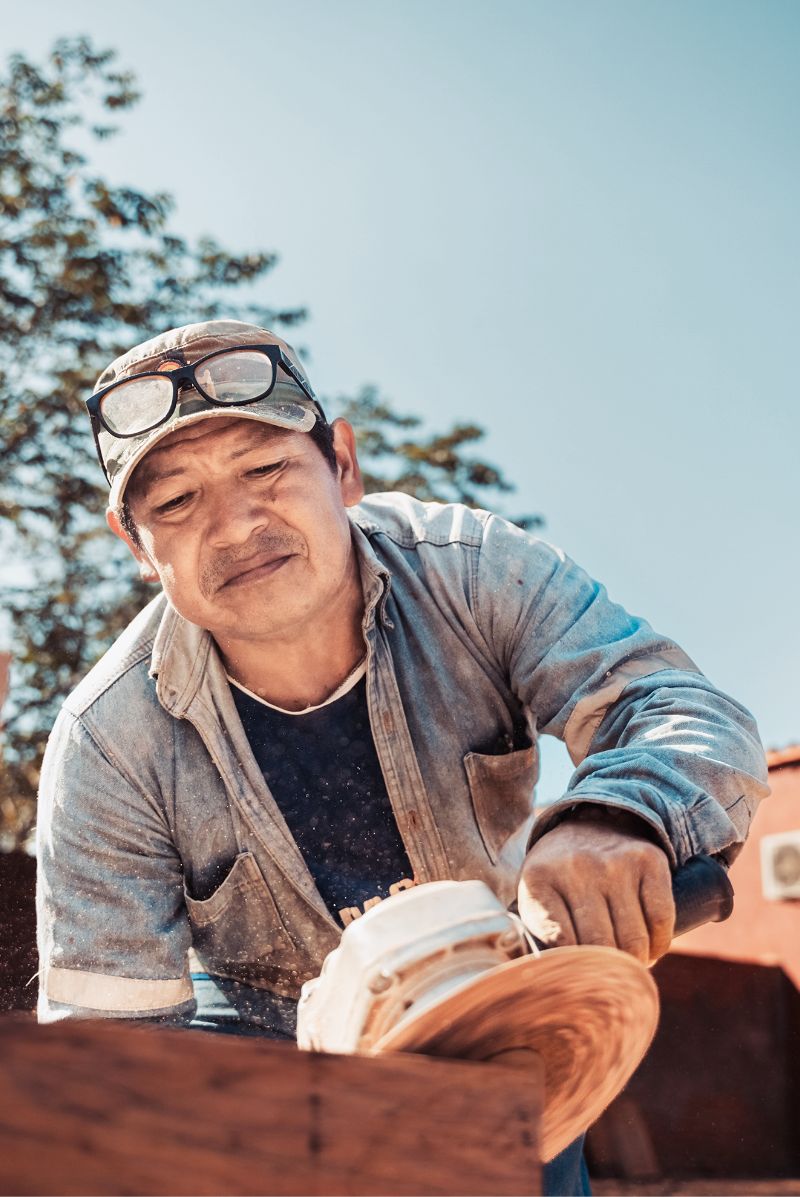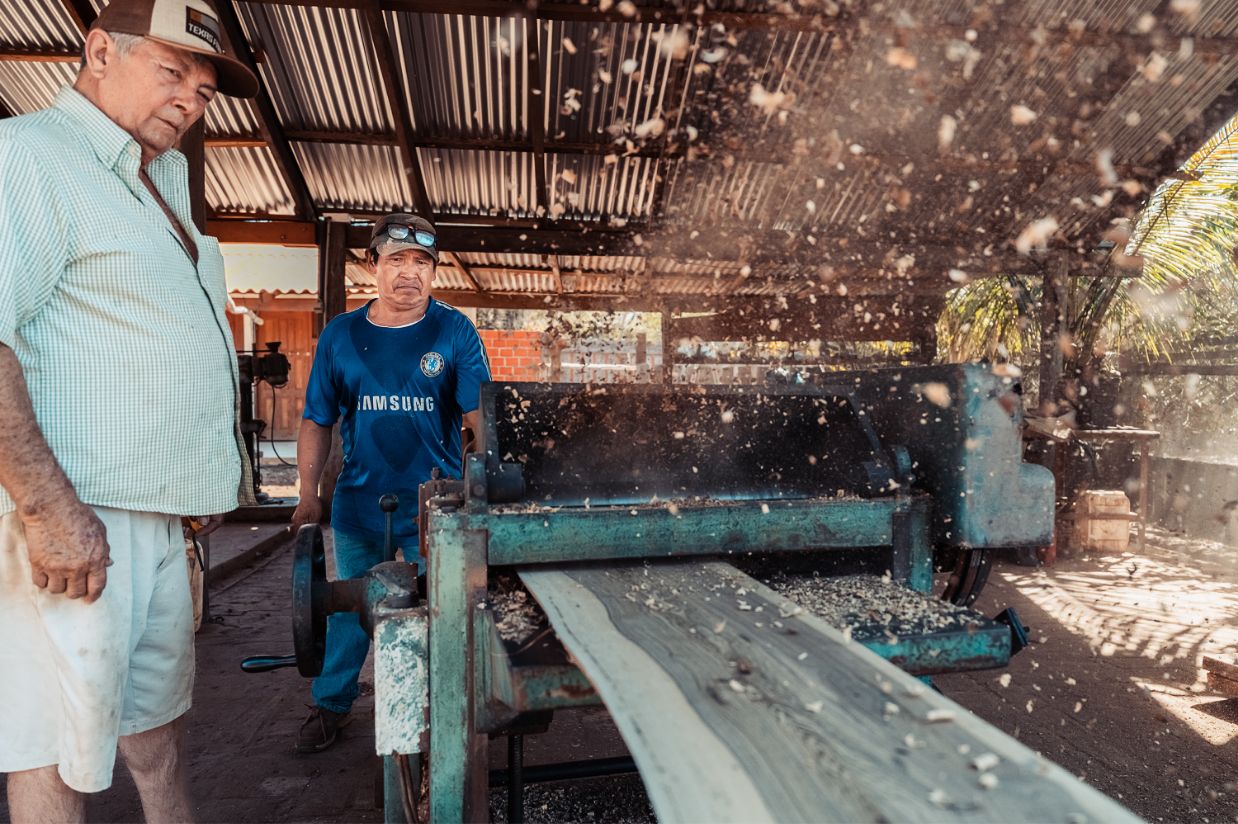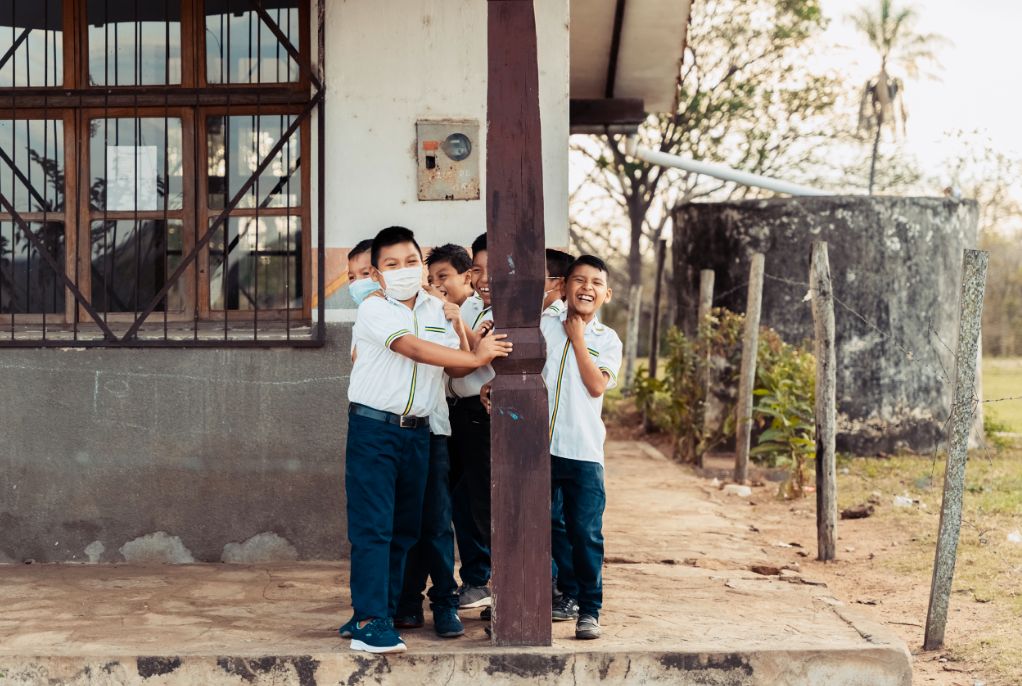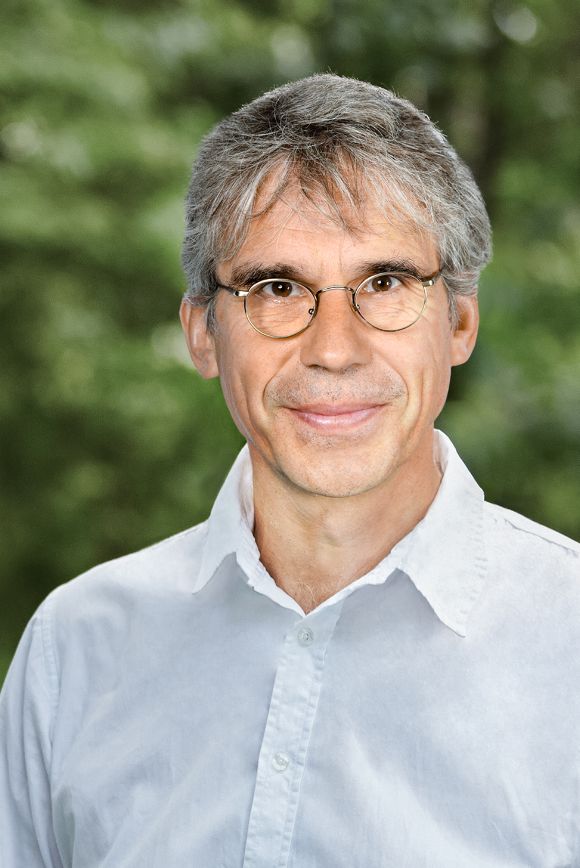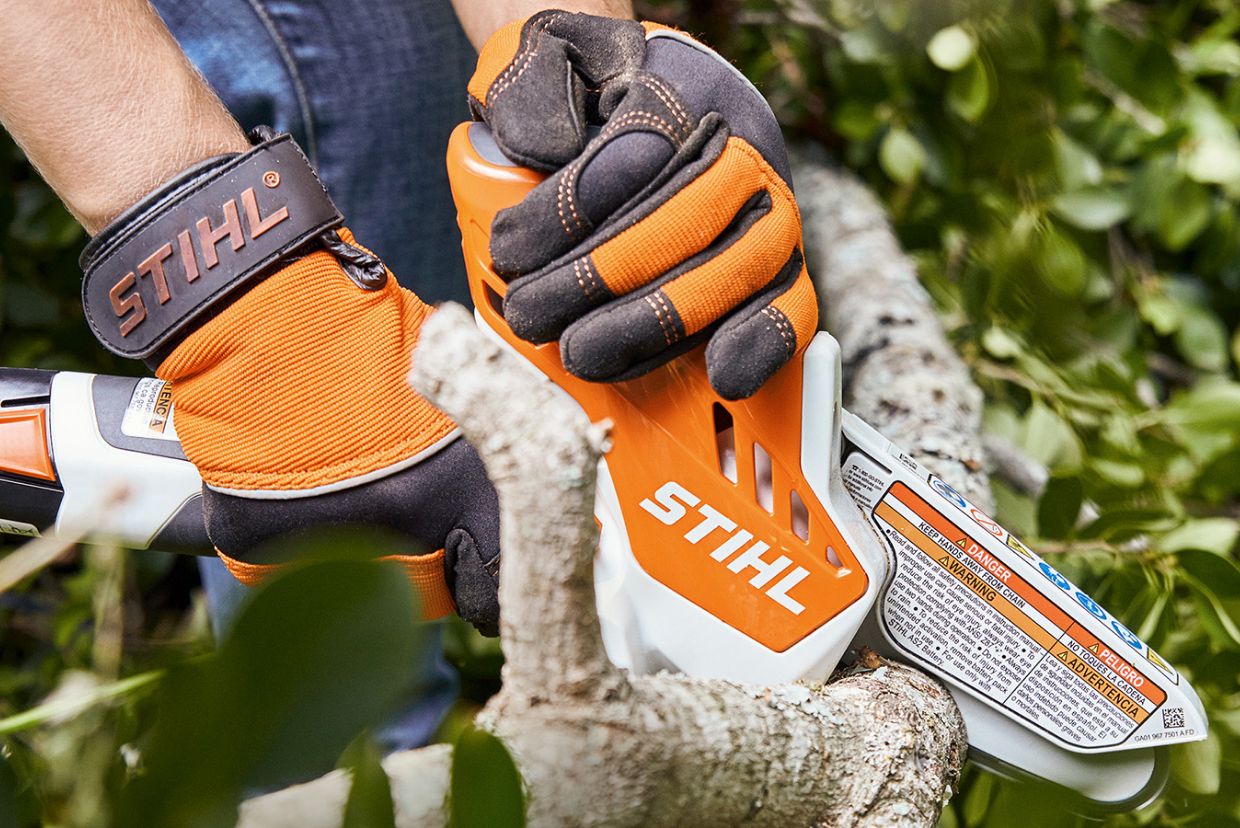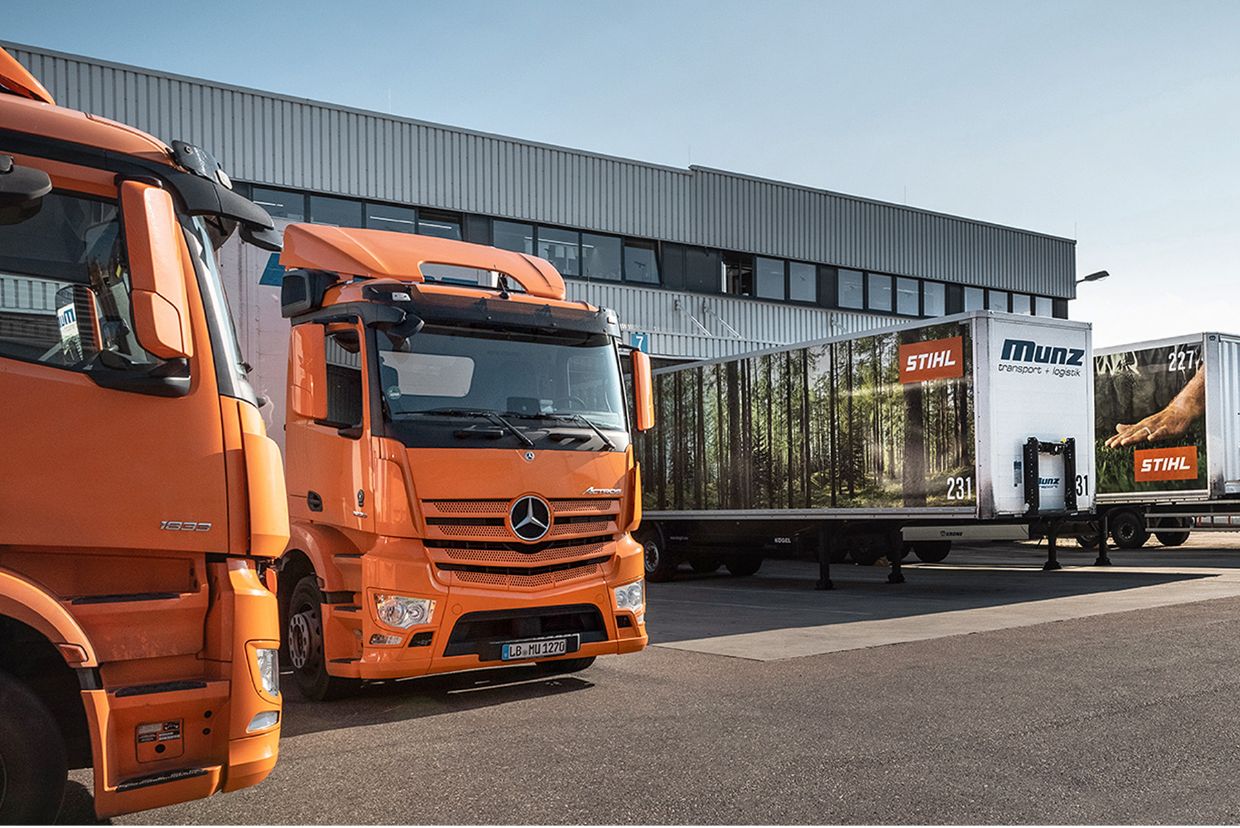In the environment, for the environment
STIHL feels a special responsibility for the environment. Our tools are used in nature and for nature. That is why we leverage our scope as a company to help protect nature and the climate. STIHL’s aim is to keep the environmental impact of our business activities and products to a minimum while using resources sparingly.
As a globally active organization, the STIHL Group naturally complies with all legal guidelines regarding environmental protection in its operations, at its sites, and through its products. The regulations to which we are subject include the European Regulation on Registration, Evaluation, Authorisation and Restriction of Chemicals (REACH) and the EU’s Restriction of Hazardous Substances Directive (RoHS). In 2022, no violations of relevant laws were reported.
Our own environmental and quality standards are often stricter than the statutory regulations. When using potentially hazardous substances, we act with tremendous care, comply with legal guidelines, and make every effort to minimize the impact of our activities on the environment. In keeping with our mission to go above and beyond the applicable environmental requirements, we plan to draw up an inventory of all critical process chemicals. By 2025, we will have an action plan that aims to minimize the use of hazardous process chemicals such as biocides (which are added to cooling oils and process water), first in our own processes and then also in our supply chain. With this we will make a contribution to the United Nations target of achieving the environmentally sound management of chemicals (SDG 12).
All of our production companies worldwide have a certified environmental management system in line with ISO 14001 and are subject to recertification every three years. External audits are conducted every year. The next recertification is scheduled for 2023 and 2024 at most production companies. Our currently valid certificates can be viewed on the STIHL corporate website. In addition to the external audits, we perform internal audits on a regular basis. Every plant has an environmental officer who is responsible for compliance with laws, standards, and guidelines.
Water and effluents
The STIHL Group requires water in manufacturing for cleaning and cooling and for other processing stages. We are constantly working to optimize the use of resources. At the STIHL chain plant in Switzerland, for example, we have succeeded in reducing water consumption for chemical deburring, electroplating, vibratory finishing, and cleaning parts.
During some manufacturing processes, water is mixed with additives to act as a cleaning agent or to finish surfaces. We treat the resulting effluents in accordance with the applicable regulatory requirements before releasing them into wastewater collection systems.
In 2022, production companies Group-wide extracted around 655,000 cubic meters of water (previous year: 630,000 cubic meters). We plan to collect and report more detailed water-use data in the future.
Waste
The main types of waste generated at STIHL are packaging, wood, metal, and plastics. Hazardous waste, such as used oil or slurry containing metals, accounts for a small share and is disposed of properly. Our waste management hierarchy consists of prevention, recycling, and disposal. We sort the waste we generate. If possible, it is reused or recycled. If not, it is properly disposed of. STIHL regularly informs and trains its employees about proper waste management.
In 2022, waste volume was significantly higher than the level reported in 2021, mainly due to construction work at STIHL in Brazil. The reporting year saw an increase in the share of other waste in particular, while the proportion of wood waste fell noticeably after certain testing activities were outsourced.
Waste¹
in metric tons – values rounded
| |
2022 |
2021 |
| Total waste volume |
68,200 |
56,200 |
| Of which hazardous waste |
9,600 |
7,300 |
| ¹ Production companies only; data collection to be expanded in the future. |
Waste by material
(previous year in parentheses)
We continued our project to examine environmentally friendly packaging. In an analysis – which was initially performed for STIHL Germany and Austria, as well as for individual types of packaging in Switzerland (chains) and the United States (mowing heads) – we identified the potential for savings with regard to our product packaging. We are currently rolling out the changes. By the end of 2023, we plan to achieve 94 percent of the identified savings opportunities and cut our use of plastics by 194.4 metric tons a year. Merely converting our mowing head packaging from plastic to solid and corrugated fiberboard, which started in 2022, will account for 111 metric tons of that reduction. In 2023, we also plan to do away with the window on our chain packaging, eliminating a further 48 metric tons of plastic. Switching to mono-materials additionally has a positive effect on the recyclability of our packaging, since different materials no longer need to be combined. A follow-up project is scheduled to begin in 2023 at STIHL Inc. in the U.S., as well as at STIHL Brazil and STIHL China.
Avoiding waste at STIHL Inc.
Our U.S. company STIHL Inc. is focused on maximum efficiency when using resources in production. In injection and blow molding, the sprues are automatically separated from the part and reused right away in further processing. Larger recyclable parts that are left over or rejected once the machines are up and running are ground down centrally and reused. In mowing line production, the lines produced when the machines are started are granulated mechanically and recycled, helping STIHL avoid process-related waste.
Converting our packaging allows us to make a contribution toward substantially reducing waste generation, a target under the goal “Sustainable consumption and production” (United Nations Sustainable Development Goal, SDG 12).
Energy and climate change mitigation
We are committed to protecting the climate and intend to help shape climate change mitigation efforts. STIHL supports the Paris Agreement and the target of limiting global warming to no more than 1.5 degrees Celsius. In 2020, we set the goal of offsetting the carbon impact of our business activities in the long term. However, we still believe that reducing emissions comes before offsetting them. Our climate change mitigation activities are our contribution to the goal “Climate action” (United Nations Sustainable Development Goal, SDG 13).
To give our climate targets a solid foundation, STIHL is currently considering whether to join the Science Based Targets initiative (SBTi).
Our first step will be to focus on Scope 1 emissions under the Greenhouse Gas Protocol, which come from energy consumption and can be influenced by our decisions. At the STIHL Group, such emissions result primarily from the combustion of gas and oil to heat buildings and during manufacturing processes, assembly, and development. They are also attributable to fuel for the vehicle fleet and coolant losses during business operations. We additionally take indirect Scope 2 emissions from electricity and district heating into consideration.
Thanks to offsetting, our locations in Germany have been climate-neutral with regard to their Scope 1 and 2 emissions since January 2021. All international production companies followed suit in 2022, with the international sales companies slated to go carbon-neutral in 2023. We have already purchased the appropriate offsets.
In the long term, we aim to lower our energy consumption and therefore reduce the share of unavoidable emissions, which we currently offset by making positive contributions in the form of carbon credits from climate protection projects.
Reducing Scope 3 emissions
Emissions occurring in the upstream and downstream value chain (Scope 3) are not something the STIHL Group can influence alone. However, we still aim to reduce such emissions in accordance with the targets under the Paris Agreement and under German legislation. Last year, we defined the areas we need to consider when it comes to Scope 3 emissions beyond the life cycle of our products. In the upstream value chain, those areas include business travel, goods and services, waste, logistics, employee commuting, and the upstream chain for our fuels. In the downstream value chain, they concern the use of our products and their disposal, as well as distribution logistics and packaging. Our next step will be to define detailed targets for individual areas.
We have calculated product carbon footprints (PCFs) for initial product groups. The calculation involves determining the environmental footprint in CO₂ equivalents in every life-cycle phase. On average, the use phase accounts for 60 to 90 percent of our products’ emissions. Battery-operated products tend to lie on the lower end of the scale, depending on the local electricity mix. We have validated and verified our calculation methods, and intend to analyze the footprint of nearly our entire product portfolio in the near future. The findings will be included in the product development process.
We are already taking action when it comes to mobility and are developing a mobility concept with a focus on alternative drive technologies. STIHL aims to offer low-emission options for commuting between our plants and plans to convert on-site traffic to electric mobility where possible. Our department cars will be gradually replaced with electric vehicles and consolidated within an interdepartmental vehicle pool. At the same time, we plan to set up charging stations at the founding company’s headquarters in Waiblingen and in Weinsheim, Germany. Company vehicles and privately owned cars alike will be allowed to use the charging stations. Charging options have been available in the visitor parking lot of the distribution center in Dieburg since 2022, as well as at the STIHL plants in Austria and Switzerland.
However, changing the way people commute to and from work allows us to make an even greater impact. By offering financial support for public transit tickets and e-bike leases, we are already making a small initial contribution toward reducing Scope 3 emissions.
Our path to a positive climate contribution
The STIHL Group’s goal of making a positive contribution to climate change mitigation by offsetting Scope 1 and 2 emissions is based on the following pillars, which we continued refining in 2022:
1) Renewable sources of electricity
Since 2022, all STIHL production companies worldwide have been using electricity from renewable sources. The ZAMA production sites in the Philippines, China, and Hong Kong will be converting to renewable sources of electricity at a later date due to existing contracts and a lack of availability. COSMOS, which the STIHL Group took over at the end of 2022, does not yet use green electricity either.
We also plan to systematically expand the localized, in-house generation of energy from renewable sources. In 2022, for instance, we installed a photovoltaic (PV) array measuring 17,000 square meters at our Chinese location. The array covers 45 percent of the plant’s electricity needs and saves around 4,740 metric tons of CO₂ emissions a year. Our Swiss chain plant has ordered its second and third PV systems, which will allow it to cut CO₂ emissions by roughly 250 metric tons a year. Through this approach, we are improving the availability and reliability of self-generated, clean energy.
2) Defossilization
By 2030, STIHL plans to reduce the use of fossil energy sources by 40 percent compared to 2019. The main fossil energy sources used at STIHL include natural gas and fuels. In 2019, their consumption stood at around 150 gigawatt-hours (GWh). All STIHL Group companies have submitted action plans for achieving these targets. The more than 100 individual measures that have been slated, including technological advancements such as optimized process heat use, will help the organization achieve roughly 80 percent of the planned reduction. At the Swiss chain plant, for example, we plan to electrify a hardening furnace by mid-2023. Doing so will allow us to save 2,400 megawatt hours (MWh) of gas, or around 600 metric tons of CO₂ emissions, over the course of a year.
3) Energy efficiency
We also aim to reduce our energy consumption overall and improve our energy intensity in the process. In 2022, our energy intensity per 1 million euros in revenue stood at 166.1 MWh (previous year: 188.0, 2019: 197.8 MWh). Initial improvements in energy consumption have already been achieved in plastics production in Waiblingen, Germany. With the support of a professional energy management system and the use of an acoustic camera, for example, the local team was able to identify leaks in the compressed-air system and take targeted measures to rectify them. The result was an immediate reduction in compressed-air needs by around 75 standard cubic meters per hour, which equates to energy consumption of more than 82,000 kilowatt-hours a year.
4) Carbon offsetting
We believe in the principle that reducing emissions comes before offsetting them. The STIHL Group offsets currently unavoidable emissions through carbon credits. Because we value internationally recognized, high-quality, and independent certification standards, those credits come exclusively from gold-standard, certified climate protection projects. Alongside climate change mitigation, we also care about further sustainable development goals that we are prioritizing as part of our sustainability strategy, including decent work for all (SDG 8) and sustainable consumption and production patterns (SDG 12). To offset the emissions of our production and sales companies by 2023, we have purchased credits for 80,000 metric tons of CO₂ emissions, which support for example a climate protection project focusing on drinking water purification in Uganda. As a result, schools will receive modern filtration technology for drinking water treatment so that they no longer have to boil it over a wood fire.
Going forward, we intend to contribute to permanent carbon capture and storage wherever possible rather than merely offsetting our emissions. To this end, we launched an agroforestry project in cooperation with Fairventures in 2022 that will provide almost 500,000 seedlings to help reforest cleared land in Uganda and Borneo. Using an app, local farmers can scan the trees regularly to deliver precise data for calculating the amount of carbon stored. By doing so, STIHL plans to store a total of 120,000 metric tons of CO₂ between 2023 and 2028 and make a positive climate contribution.
Energy consumption and intensity
The energy management system at our German production plants has been certified in line with ISO 50001. Our aim is to save energy and costs through efficiency measures.
In 2022, our total energy consumption (Scope 1 and 2 under the GHG Protocol) amounted to roughly 497 gigawatt-hours (GWh), which is 17.2 GWh, or around 3 percent, below last year’s level (514 GWh). The largest shares of energy consumption are attributable to electricity, in particular for production, at 66 percent and natural gas to heat buildings at 29 percent. While electricity consumption was virtually unchanged at 331 GWh (previous year: 332 GWh), consumption of natural gas fell sharply to 146 GWh in 2022, compared with 160 GWh in 2021. We have reduced our gas consumption on account of the impact of the Russia–Ukraine war. The steps taken to do so include powering down the cogeneration plant at the Waiblingen location. We have had to compensate for the missing heat by using regular heating oil furnaces, resulting in a rise in local emissions. At our companies in Germany, Austria, and Switzerland, we have also turned down the heat to save gas.
Approximately half of our gas consumption was attributable to the STIHL Group’s German locations. We use most of the gas for processes such as casting and metal hardening. However, we are constantly looking for ways to reduce gas consumption and replace natural gas with sustainable sources of energy.
Energy consumption¹
in GWh – values rounded
| |
2022 |
2021 |
2020 |
2019 |
| Natural gas |
146 |
160 |
141 |
133 |
| Heating oil |
2.8 |
5.8 |
4.5 |
3.4 |
| Fuel² |
13.8 |
12.5 |
12.1 |
13.4 |
| Renewable energy (geothermal heating and cooling) |
1.6 |
1.3 |
2.5 |
0.4 |
| Total direct energy consumption |
164.2 |
179.6 |
160.1 |
150.2 |
| Electricity |
331 |
332 |
294 |
279 |
| Of which from renewable sources |
297 |
160 |
67 |
67 |
| District heating |
1.6 |
2.4 |
2.1 |
1.1 |
| Total indirect energy consumption |
332.6 |
334.4 |
296.1 |
280.1 |
| Total energy consumption |
496.8 |
514.0 |
456.2 |
430.3 |
| ¹ Including STIHL direct GmbH, STIHL Ventures GmbH, treeva GmbH, and STIHL International GmbH, which are based at the founding company’s headquarters. Not including the ZAMA companies in Japan and the U.S., which are not production companies. |
| ² STIHL Germany: founding company and Dieburg distribution center. |
Energy intensity (per 1 million euros in revenue) decreased in line with the lower energy consumption to 166.1 MWh (previous year: 188.0 MWh).
Energy intensity¹
in MWh per 1 million euros in revenue
Emissions and emission intensity
Measured in CO₂ equivalents, emissions at the German STIHL locations and at international production companies stood at 53,685 metric tons in total in 2022 (Scope 1 and 2 under the GHG Protocol, previous year: 93,840 metric tons). They were offset by positive contributions to climate protection projects (see “Offsetting,” p. 48).
The significant decline in CO₂ emissions is primarily due to the conversion of the production companies worldwide (excluding the ZAMA companies) to green electricity. In 2022, we obtained around 90 percent (previous year: 48 percent) of our electricity needs from renewable sources and therefore achieved a corresponding reduction in the CO₂ emissions resulting from electricity consumption (see “Renewable sources of electricity,” p. 47).
Greenhouse gas emissions¹
in metric tons of CO₂e – values rounded
| |
2022 |
2021 |
2020 |
2019 |
| Natural gas emissions |
29,980 |
32,570 |
28,860 |
27,210 |
| Heating oil emissions |
710 |
1,510 |
1,180 |
900 |
| Fuel emissions |
4,620 |
3,300 |
3,340 |
3,720 |
| Coolant emissions |
980 |
1,310 |
790 |
1,860 |
| Total direct emissions (Scope 1) |
36,290 |
38,690 |
34,170 |
33,690 |
| Electricity emissions |
17,330 |
55,060 |
66,450 |
58,690 |
| District heating emissions |
65 |
90 |
120 |
60 |
| Total indirect emissions (Scope 2) |
17,395 |
55,150 |
66,570 |
58,750 |
| Total emissions (Scope 1 and 2) |
53,685 |
93,840 |
100,740 |
92,440 |
| Of which offset |
53,685 |
19,800² |
0 |
0 |
| ¹ Including STIHL direct GmbH, STIHL Ventures GmbH, treeva GmbH, and STIHL International GmbH, which are based at the founding company’s headquarters. Not including the ZAMA companies in Japan and the U.S., which are not production companies. |
| ² STIHL Germany: founding company and Dieburg distribution center. |
Emissions and emission intensity are presented using the market-based approach. The calculation takes into account hazardous greenhouse gases under the GHG Protocol, which mainly consist of CO₂ emissions. Although STIHL only generates negligible volumes of other greenhouse gases, such as coolants, such emissions are included for the sake of completeness.
Emission intensity¹
Scope 1 and 2 in metric tons of CO₂ per 1 million euros in revenue, without offsetting, values rounded
